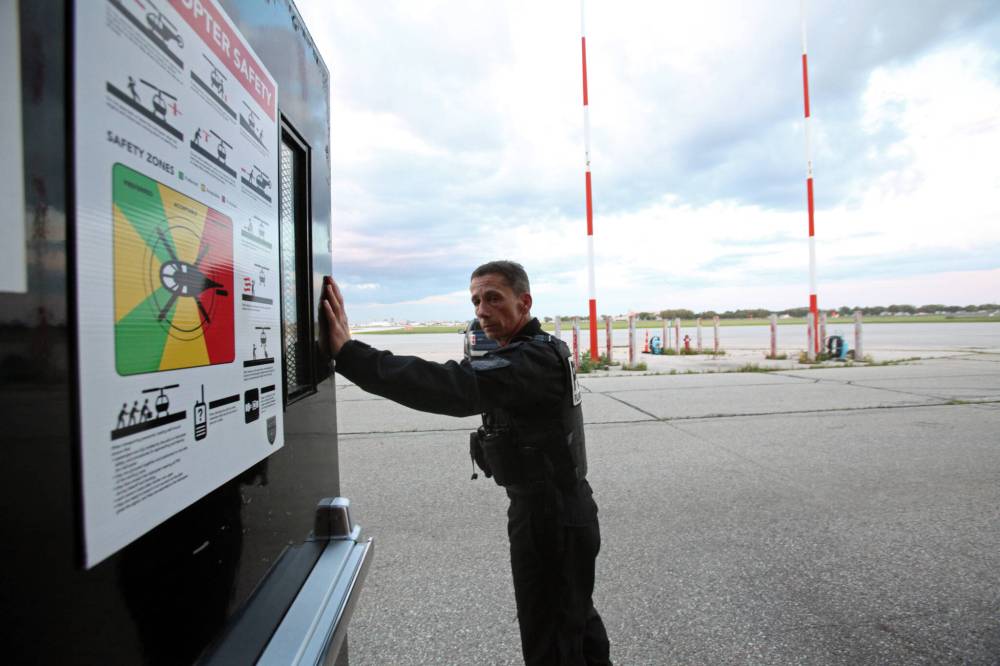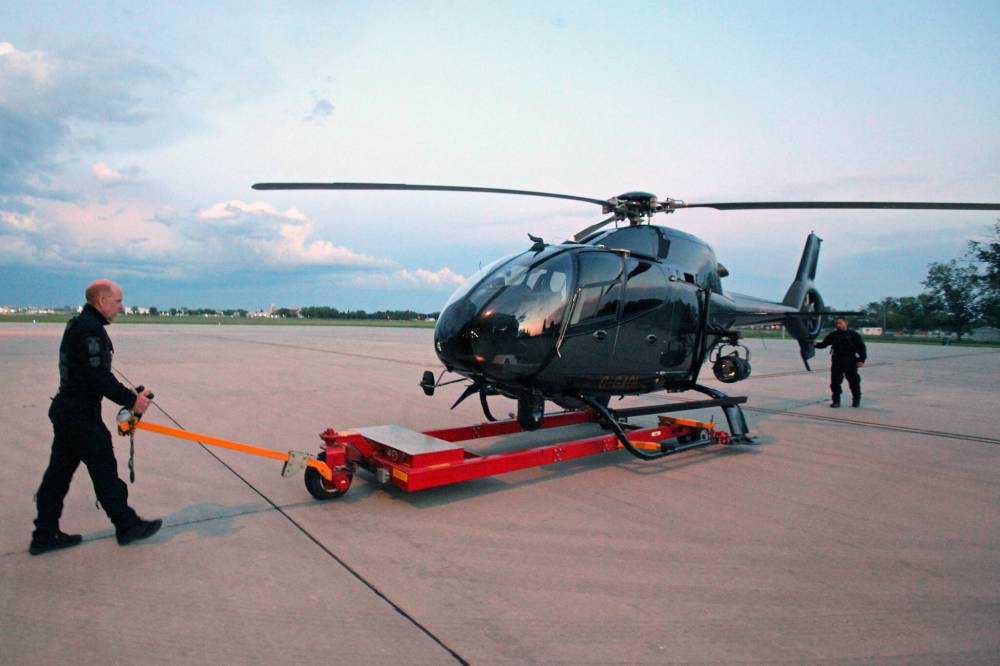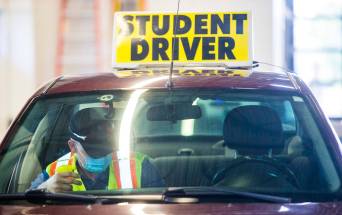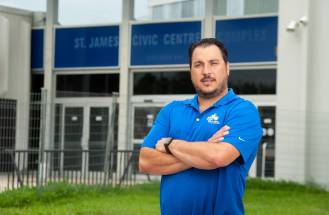Turbulence in the air Civic-election campaign candidates reignite debate over ongoing cost, law-enforcement value of helicopter Winnipeg police defend as an ‘absolutely invaluable tool’
Read this article for free:
or
Already have an account? Log in here »
To continue reading, please subscribe:
Monthly Digital Subscription
$0 for the first 4 weeks*
- Enjoy unlimited reading on winnipegfreepress.com
- Read the E-Edition, our digital replica newspaper
- Access News Break, our award-winning app
- Play interactive puzzles
*No charge for 4 weeks then price increases to the regular rate of $19.00 plus GST every four weeks. Offer available to new and qualified returning subscribers only. Cancel any time.
Monthly Digital Subscription
$4.75/week*
- Enjoy unlimited reading on winnipegfreepress.com
- Read the E-Edition, our digital replica newspaper
- Access News Break, our award-winning app
- Play interactive puzzles
*Billed as $19 plus GST every four weeks. Cancel any time.
To continue reading, please subscribe:
Add Free Press access to your Brandon Sun subscription for only an additional
$1 for the first 4 weeks*
*Your next subscription payment will increase by $1.00 and you will be charged $16.99 plus GST for four weeks. After four weeks, your payment will increase to $23.99 plus GST every four weeks.
Read unlimited articles for free today:
or
Already have an account? Log in here »
Hey there, time traveller!
This article was published 18/08/2022 (1209 days ago), so information in it may no longer be current.
Winnipeg police Const. Gary Duncan hovers over a North End street doing some routine stolen-vehicle licence plate checks before heading downtown and then west towards the Grace Hospital, where the hunt is on for a suspect in an assault on a young girl.
But then the radio dispatch crackles, and there’s a change of plans.
The police helicopter pilot is told there has been a break-in at a house in Weston, which has not been secured. Flying across the downtown core in what seems like seconds, the chopper now hovers above the Gallagher Avenue home until a squad car arrives.
ERIK PINDERA/WINNIPEG FREE PRESS Winnipeg Police Service helicopter pilot Const. Gary Duncan (right) flies over the city one evening in July.
Minutes later, Duncan pilots the machine the Winnipeg Police Service purchased for $3.5 million in 2010 to Battery Street in Burrows-Central, where a woman has been screaming for help. He lights the area with a spotlight as a ground patrol searches for her.
She’s nowhere to be found.
Later, Duncan and his tactical flight officer respond to a traffic stop on Arlington Street. In total, the crew takes six calls during the roughly 90-minute flight — the first of at least two trips into the air on a recent Tuesday evening.
The EC120B Colibri helicopter did not assist on any arrests that flight, but on some nights, it’s a different story, according to Patrol Sgt. Kelly Takatch.
“We take call after call after call — sometimes they’re newsworthy, sometimes they aren’t,” Takatch says.
“There’s all types of calls where I think because we’re involved and engaged and assigned, I truly believe we’re saving lives.”
The high-tech chopper has again become a political hot potato as the fall civic election campaign begins to heat up. Critics concerned about police spending and tactics have renewed calls for the chopper to be permanently grounded.
“There’s all types of calls where I think because we’re involved and engaged and assigned, I truly believe we’re saving lives.” – Sgt. Kelly Takatch
The WPS is again trying to make a case for its effectiveness, giving the Free Press rare access to its flight unit.
Takatch lists off the machine’s capabilities: an infrared camera that detects heat, a loudspeaker, a spotlight, a GPS map that pulls up street addresses in seconds; a down-link that sends video and audio to personnel on the ground and an enclosed trail rotor that makes it quieter than most commercial machines.
Depending on the wind, the helicopter — officially known as AIR-1 — can fly across the city in three to four minutes. It can track people on foot: crime suspects, missing persons, people in distress. It can also track vehicles during pursuits, which Takatch says are the most dangerous calls.
In 2021, when the helicopter was stripped and rebuilt from late March to early June for its 12-year inspection, it responded to 1,697 calls for service, down about five per cent from the year prior, according to the latest AIR-1 annual report.
ERIK PINDERA/WINNIPEG FREE PRESS “We take call after call after call — sometimes they’re newsworthy, sometimes they aren’t,” says Winnipeg Police Service flight operations unit Patrol Sgt. Kelly Takatch.
The WPS classified 1,154 of those calls high risk. It flew for 795 hours, pursued 82 vehicles and found 394 people — 202 of whom were located during “non-criminal events.” The machine also responds to fires, 39 of them in 2021.
Duncan spotted at least one of those blazes, on William Avenue, detecting heat emitting from the burning home with the helicopter’s infrared camera, then reporting the fire to emergency personnel on the ground. Officers helped pulled six people out of the burning building.
If it were up to Glen Murray, Winnipeg’s former mayor (1998-2004) and the current frontrunner per a recent Probe Research poll in the mayoral race slated for Oct. 26, the police helicopter would be on the chopping block.
If elected, Murray said he would advise the Winnipeg Police Board to replace the helicopter with drones, as part of his public-safety plan focused on partnering with community groups to crack down on crime.
Others, such as mayoral candidate and Charleswood-Tuxedo-Westwood Coun. Kevin Klein, and St. James council candidate and police officer Tim Diack, have come out in support of the helicopter.
Murray wants to be clear: grounding the helicopter is just one aspect of his wider policing plan.
“I dare say that it’s hard for me to figure out what the policing strategy in this city is, other than it’s not working,” Murray said during a lengthy, but fast-paced phone interview.
“I dare say that it’s hard for me to figure out what the policing strategy in this city is, other than it’s not working.” – Glen Murray
“What I’m experiencing where I live in south-central Winnipeg, and where I work downtown, is rising violent-crime concerns from friends and neighbours, attacks and the kind of violence on the street in broad daylight or in the evening that we’ve never seen before.”
He wants to work with police to set violence-reduction targets, so “we’re not making police decisions in the rear-view mirror.”
Murray said he wants communities involved in their safety and police more involved in the community. He pointed to the work of longtime community activist Sel Burrows as an example of the kind of relationship to strive for, and fund with cost savings from keeping the helicopter on the ground.
“We’ve got an excellent police force with a lot of great people in it. We need vision and leadership right now to better deploy those resources. We have communities that have had some negative experiences with police… felt abandoned and left out by police, or they’ve got some issues with the police service,” he said.
“We have to listen to community, we have to bring community and police back together… (we) can’t run away from the challenges that we face.”
Murray also said he thinks addressing a wider safety agenda — improving health and addressing homelessness, addictions and mental well-being, creating well-lit communities with successful local businesses and better funded libraries — would lead to lower crime. Repeat violent offenders are another concern, he said, as is police monitoring of their movements while out on court conditions.
Drones, he later said by email, are an example of modern, green technology that would be an efficient, effective and cost-reducing tool for police.
“They create a great deal of flexibility, as several of them can be deployed at a fraction of the cost of a helicopter and they can operate every day and all day, whereas the helicopter operates only 16 hours a week. They do not require crews or expensive maintenance, fuel and repair. Drones can be stored in the trunk of a cruiser car in each district and easily deployed within five to 10 minutes,” the email read.
WPS Supt. Brian Miln, who oversees operational support, including specialty units such as flight operations, said he thinks the helicopter is an “absolutely invaluable tool” to support police on the ground.
“It has paid absolute dividends in terms of its capabilities, its efficiency, the benefit for the amount of money…. In terms of dollar for value, I would be hard-pressed to find another tool in the policing environment that provides that same sort of benefit,” he said.
ERIK PINDERA/WINNIPEG FREE PRESS Winnipeg Police Service flight operations Patrol Sgt. Kelly Takatch (right) and pilot Const. Gary Duncan prepare the service’s helicopter before a flight in July.
Over the past five years, the helicopter has cost an average of about $2 million annually in salaries, maintenance and the machine itself, Miln said, compared to the $2.5 million in annual costs for a cruiser car — though cruiser cars are generally out on the street 365 days a year. In 2021, the helicopter cost about $2.268 million of the city’s $313-million police budget, which equates to $2,852.68 per hour of flight time.
“I think it would be devastating to the citizens of Winnipeg if we lost this asset, in terms of how it assists in policing, how it assists in the capture of suspects, how it assists in high-risk situations,” he said.
He also pointed to polling in a past audit of the helicopter’s operations — released in 2019 by the accounting firm MNP — to suggest most Winnipeggers are supportive of the police using the machine.
Miln would not comment directly on Murray’s campaign promise. However, he noted the police already have a drone unit — but he said the current technology can’t replicate what the helicopter does.
“We’re always looking for ways to improve the service delivery to the public, and part of that is responsible use of the funds, the taxpayer funds, that we receive year after year. So if there’s a better way of doing something, we will be the first to examine that,” Miln said, adding that federal flight regulations limit where the drones can be flown.
“I think it would be devastating to the citizens of Winnipeg if we lost this asset, in terms of how it assists in policing.” – WPS Supt. Brian Miln
Asked of criticism of Winnipeg police as overly militarized, Miln argued it’s a safety issue.
“We respond to what the demand is for our services — in the last number of years, and our yearly annual stats speak to this — we have had significant increases in weapon-related calls for service, especially including knives and guns,” he said.
“We, as a service, have to respond to that accordingly. In order to do that that means enhanced training, different types of units that can deal with this sort threat to the public, but it also includes different tools that we require to respond.”
Critics, such as University of Winnipeg associate criminal justice professor Kevin Walby, contend police helicopters and armoured vehicles like the one city police purchased in 2015, as well as the increasing use of long-gun armed tactical teams to execute search warrants, are evidence of the increasing militarization — the use of military equipment and tactics — of police.
“The police helicopter is the tip of the mountain of the budget problem that police represent,” said Walby, who is also a proponent of cutting the police budget in favour of funding social services.
ERIK PINDERA/WINNIPEG FREE PRESS Sgt. Kelly Takatch (left) and pilot Const. Gary Duncan. The helicopter — officially known as AIR-1 — can track people. It can also track vehicles during pursuits, which Takatch says are the most dangerous calls.
The researcher said he thinks the police service’s use of statistics on things like the helicopter is rhetorical, rather than safety-driven. Police-reported numbers on the use of the helicopter show a minimal return on investment, he argued, pointing to research conducted by police-abolitionist activist group Winnipeg Police Cause Harm, which suggested the helicopter causes significant audible and physical distress to citizens in lower-income areas.
“If police were really interested in safety, they would take a look at the rates of transgression and the rates of distress in the city and they would realize 20 years of pretty hardline law-and-order policing, 20 years of growth of police budgets, and those things haven’t gone down,” Walby said.
“If they’re flying a helicopter around at night keeping people awake and occasionally they’re able to direct their police cars here or there a little better, well that’s not providing safety at all.”
Walby said he thinks money spent on police, including the helicopter, would be better spent on community and social development, as well as integrated crisis-response teams of street nurses, social workers and psychologists to respond to non-violent incidents.
erik.pindera@freepress.mb.ca
Twitter: @erik_pindera

Erik Pindera reports for the city desk, with a particular focus on crime and justice.
Our newsroom depends on a growing audience of readers to power our journalism. If you are not a paid reader, please consider becoming a subscriber.
Our newsroom depends on its audience of readers to power our journalism. Thank you for your support.









